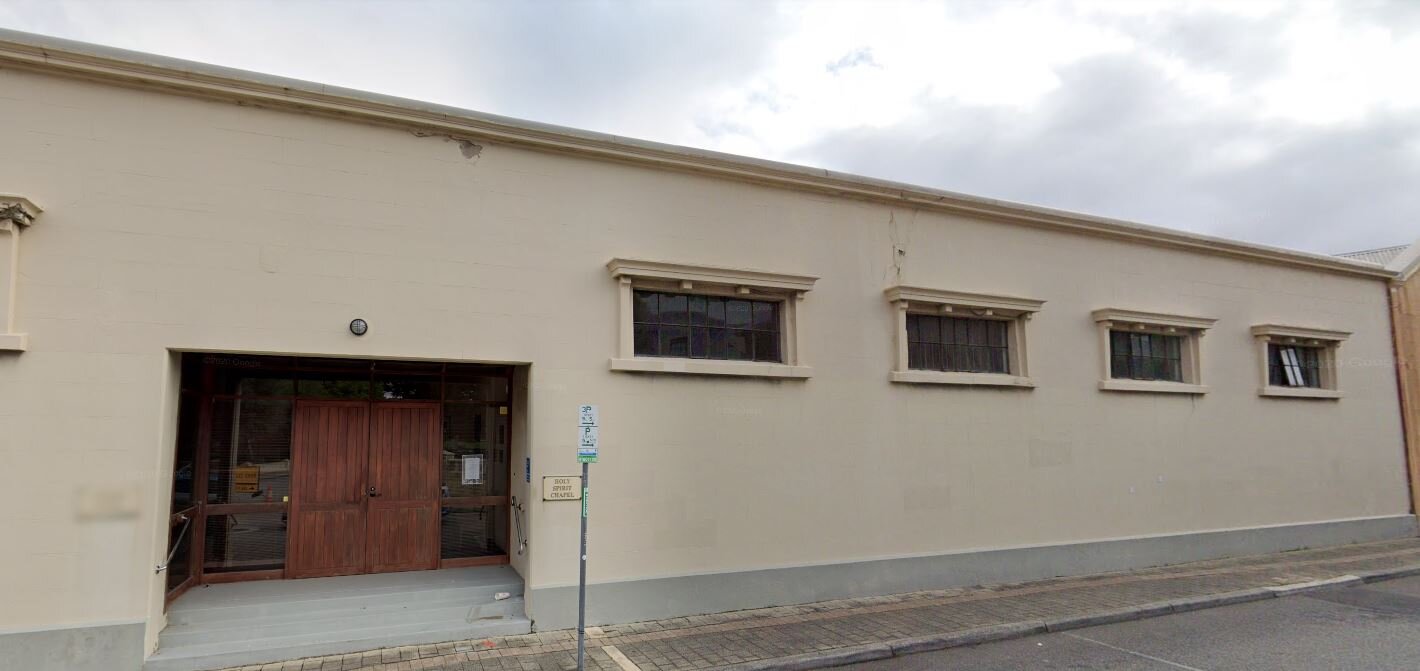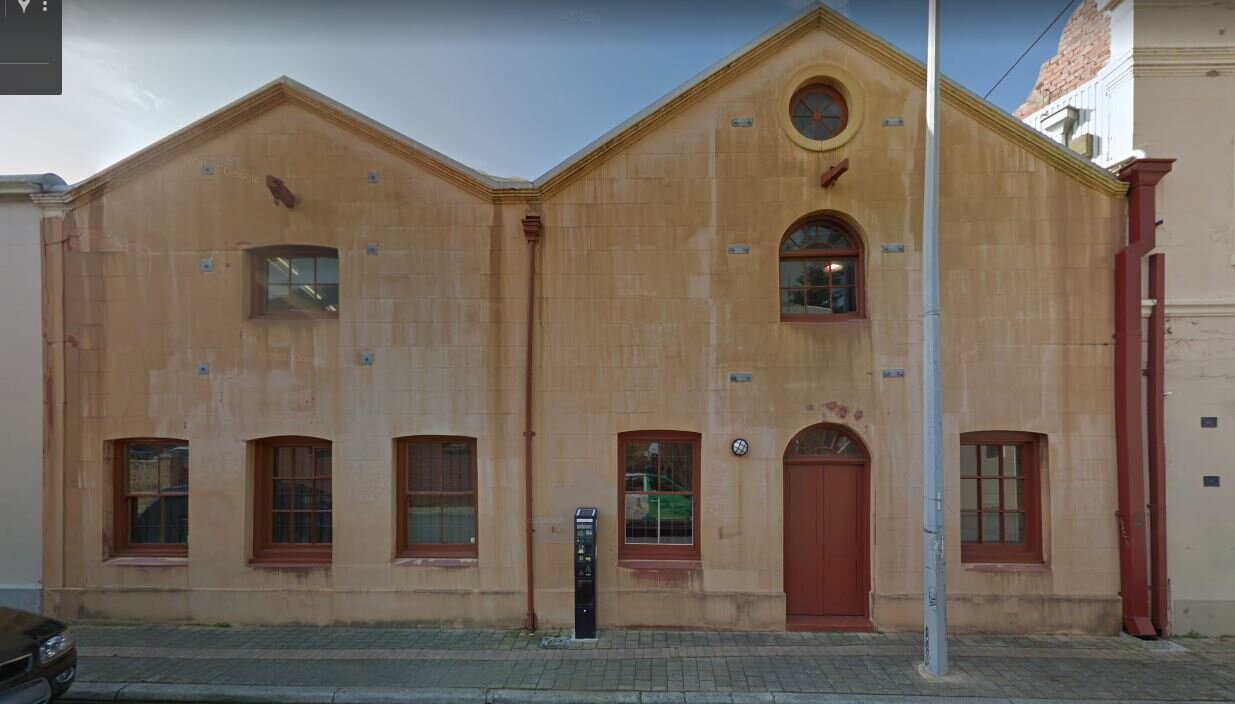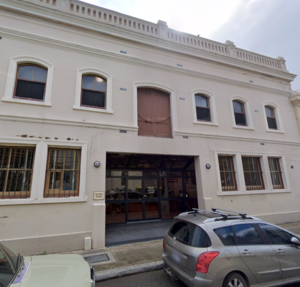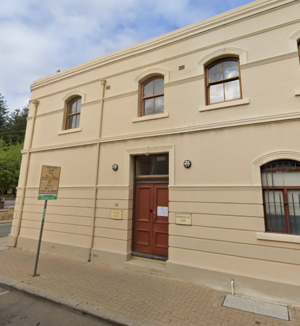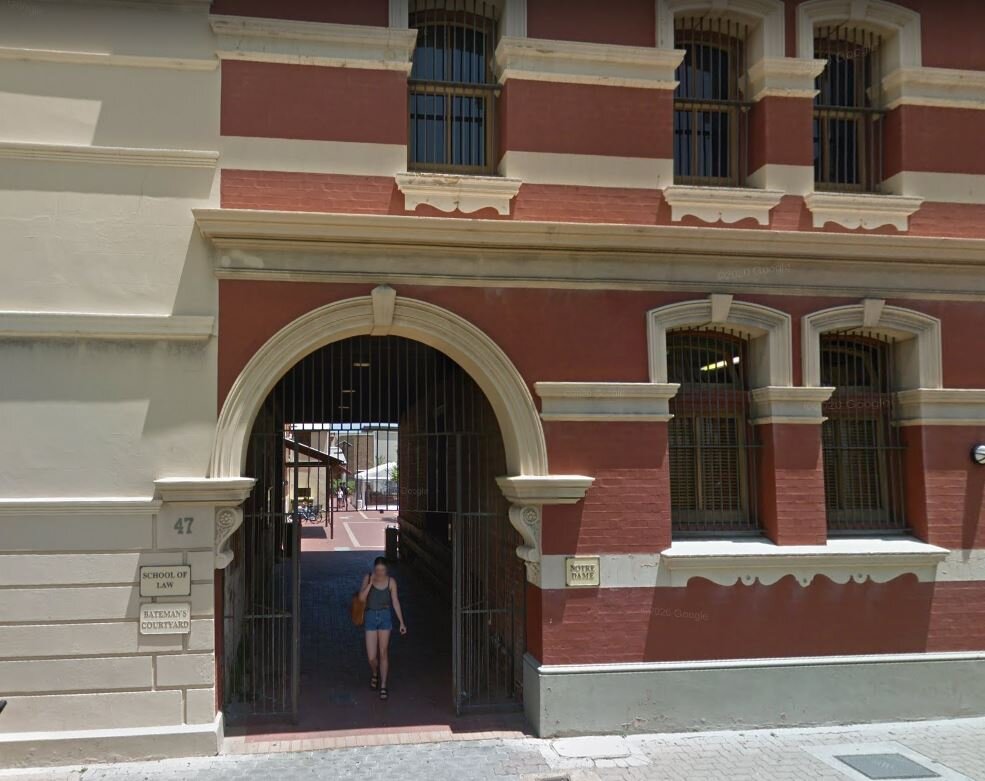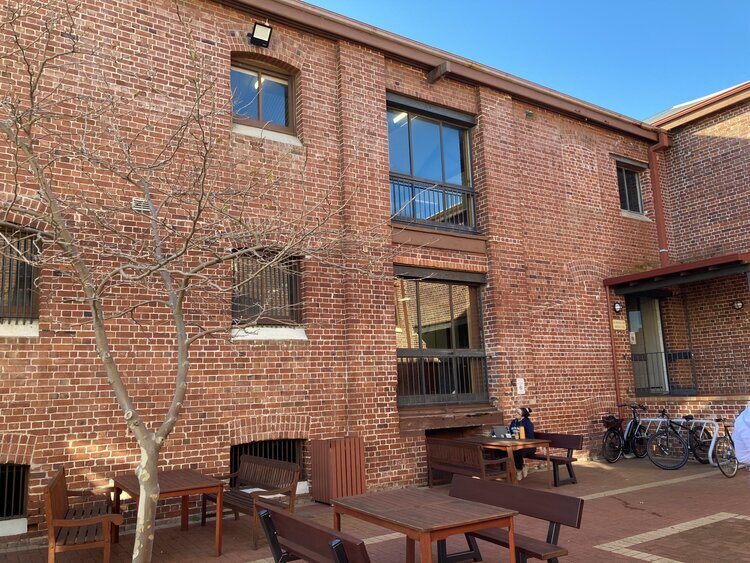Notre Dame University ND49 - ND 50- School of Physiotheraphy and Gymnasium, Classrooms and Research Hub
Formerly Falk & Company Warehouse, Customs House Facade
2 Henry Street (was 4 pre 1938) & 41 Phillimore Street (was 58 pre 1938)
Customs House and former Falk & Company Warehouse was a historic building with a number of prominent ornate façades on Phillimore Street between Henry and Pakenham Streets. The facade of the building and new extensions now extend south until the Lance Holt School (no 10) on Henry St.
Originally built on Lot 55
Architecture: Two storey, rendered, prominent and corner building, with original façade only intact, a brick building has been built behind the façade, which has a zero setback from the pavement. The façade, which extends predominantly into Phillimore Street, has engaged pilasters and a parapet with two pediments.
History: There were simple buildings on the corner of Henry and Phillimore Streets from as early as 1880. It is only as a result of the reclamation work undertaken in the 1880s for the harbour and railway works that development of this site became possible, as previously it had been on the water's edge.
The lot was originally owned by Harrod until 1896, when it was purchased by Gallop, and then to Lilly and Co. in 1898 it appears in the rates record as the property of James Lilly until c. 1909, but remained in the family as part of his estate until after 1940.
The Falk Building for P Falk & Co. (est 1886 in Victoria) was constructed in 1888, by architect F. W. Burwell in with substantial additions designed by Burwell and built by James Brownlie in 1903. These additions wrapped the corner and front onto both Henry and Phillimore St. Falk remained the tenant until 1905.
2 May 1889 New Business Premises at the Port, Messrs. P. Falk & Co. celebrated the opening of their new premises in Henry street, Fremantle, yesterday afternoon. At the invitation of Mr. Alexander the popular local representative of the firm, a numerous company assembled, among whom were present Messrs. Elias Solomon (Mayor), W. S. Pearse, M.L.C., W. E. Marmion, M.L.C., … (reference)
1898 In the early hours of this morning an attempt was made to burglariously enter the warehouse of Messrs. T. Falk and Co., Henry-street, Fremantle. At about ten minutes to 3 o'clock this morning, the watchman of the locality, Mr. T. Lowden, in going his rounds, found that Messrs. Falk and Co. back door had quite recently been tampered with… (reference)
One of P. Falk & Co’s Managing Directors, Mr Lawrence Alexander, was briefly elected Mayor of Fremantle in 1901 and 1902, after the serving Mayor E.W. Davies, considered insane, was removed from office. (reference):
1927 It is not unlikely that Mr. Lawrence Alexander, manager of Messrs. P. Falk and Co., Ltd., will be found to be something of a record-breaker in the business world of Australia. As a young man of 26, he received the Company's power of attorney for this State, and took over the management of the business in April, 1888. In those days the Falk establishment was situated in very humble premises at Fremantle. It had been operating here for 20 months before Mr. Alexander was sent across from the East as its third manager. Now after a connection of 41 years with Western Australia, it has still only had three managers. (reference)
1914 Suicide- George R. Rowe (44), manager at Fremantle of P. Falk and Co., Ltd., committed suicide on Saturday morning by shooting himself in the head and taking poison. Deceased was finishing his employ with the firm, and was to have handed over to his successor that morning. (reference)
In 1985 Commonwealth offices were built, on the site of a number of Victorian warehouses and offices, with only the facades of these being retained and the entire interior of the site being demolished and rebuilt. The most prominent of these older buildings, and the one whose façade now serves as the main entrance to the Customs House, was that of P. Faulk and Co. Oldham Boas Ednie-Brown architects and builders, carried out the $13.7 million redevelopment project. It housed the Fremantle regional office of the Australian Customs and Border Protection Service, Centrelink, and a number of other Australian Government offices and commercial offices.
2021 Currently used by Notre Dame for their School of Physiotherapy Gymnasium and Computer Labs.
OccupantS:
No. 2 Henry St.
Lot 74 owners:
1829 - 1837 Gellibrand, J T
1855 - 1857 Leake, L
1858 - 1859 Horwood, J J
1876 - 1878 Horwood, J J(Jnr.)
Postal:
1898 - 1899 Falk & Co (P.) (L. Alexander, manager), wholesale tobacconists & jewellery importers
1935 - 1938 Barnard Ltd Eric, customs, forwarding & shipping agents
1939 - 1942 Daly Bros, shipping agents
1942 - 1945 United States Navy (stores)
No 41. Phillimore St
Lot 73 owners:
1829 - 1837 Johnston, G F
1855 - 1858 Leake, L
1859 Horwood, J J
1876 - 1878 Horwood, J J(Junior)
Postal:
1902 - 1911 Preston & Co. H. J. merchants & importers
1912 - 1929 Nestle & Anglo-Swiss Condensed Milk Company(1914-1929 William Lohoar, manager)
1935 - 1938 Barnard Ltd Eric, customs, forwarding & shipping agents
1939 - 1949 Daly Bros, shipping agents









